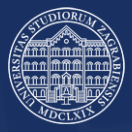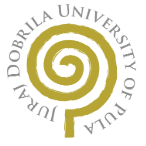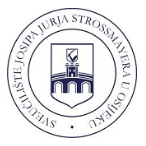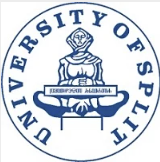Detailed introduction of the University of Zagreb:
Introduction
The University of Zagreb (Sveučilište u Zagrebu in Croatian and Universitas Studiorum Zagrabiensis in Latin) is the largest and oldest university in Croatia. It is also one of the longest-running universities in Central Europe and Southeast Europe south of Vienna. It is also the research center of Croatia and is known as the banner of the country's national educational institutions.
Overview
Number of students and faculty: 72,480 students in 2015 and 7,963 academic faculty in 2012.
Campus distribution: The campuses are located in the center of Zagreb, the capital of Croatia, and are widely distributed.
History
Early origins: The history of the school can be traced back to September 23, 1669, when the Holy Roman Emperor Leopold I issued a decree approving the establishment of the Royal Free City of Zagreb Jesuit College, which gave Zagreb's philosophy research legal status and became a public higher education institution. The academy was run by the Jesuits for more than a century until it was dissolved by Pope Clement XIV in 1773.
Royal Academy of Sciences: In 1776, Queen Maria Theresa issued a decree to establish the Royal Academy of Sciences, replacing the previous Jesuit Academy, with three departments: philosophy, theology, and law.
Founding of the University: In 1861, Bishop Josip Juraj Strossmayer proposed to the Croatian Parliament to establish a university. In 1869, Emperor Franz Joseph signed the decree to establish the University of Zagreb. In 1874, the parliament passed the school establishment bill. On October 19 of the same year, the Royal University of Franz Joseph I officially opened.
Establishment time
September 23, 1669.
School strength
Rich teaching resources: As the strongest teaching institution in Croatia, the University of Zagreb has 31 colleges and 3 art colleges, providing bachelor's, master's and doctoral degree programs in the fields of art, biomedicine, biotechnology, engineering, humanities, natural and social sciences, and has more than 50,000 full-time undergraduate and graduate students.
Strong research strength: The University of Zagreb is a highly research-oriented institution, contributing more than 100 million yuan to Croatia's total research output. 50%, with remarkable research results in many disciplines such as agricultural science, clinical medicine, computer science, etc., and has made important contributions to Croatia's scientific and technological development and social progress.
Institutional nature
Public university.
Educational philosophy
The educational philosophy of the University of Zagreb is based on scientific and artistic research, aiming to promote sustainable development, artistic creativity and professional work, as well as organize and conduct university learning and professional research. As a core and leading institution, the university pays special attention to the implementation of projects that are of strategic significance to the development of the Republic of Croatia and regional and local communities. All university activities are committed to promoting personality development, human rights and fundamental freedoms.
Key laboratories and disciplines
Key disciplines: Engineering, medicine, law, economics, and computer science are the key disciplines of the University of Zagreb. It also ranks relatively high in agricultural science, biology and biochemistry, clinical medicine, computer science and other disciplines, among which agricultural science ranks 124th.
Key laboratories: The university has many key laboratories, such as some laboratories in the fields of biomedicine, chemistry, physics, etc., which provide advanced research facilities and conditions for scientific researchers and students, but the specific laboratory information is not listed one by one due to the large number of disciplines.
Faculties
The University of Zagreb has 29 faculties, 3 faculties of arts and 1 university center, covering a wide range of disciplines, mainly including the following faculties:
Faculty of Natural Sciences: Faculty of Sciences, Faculty of Chemical Engineering and Technology, Faculty of Civil Engineering, Faculty of Electrical Engineering and Computing, etc.
Faculty of Biomedical Sciences: Faculty of Pharmacy and Biochemistry, Faculty of Veterinary Medicine, Faculty of Medicine, etc.
Faculty of Social Sciences: Faculty of Economics and Business, Faculty of Law, Faculty of Political Science, etc.
Faculty of Humanities: Faculty of Humanities, Catholic Seminary, etc.
Faculty of Arts: Faculty of Dramatic Arts, Faculty of Fine Arts, Faculty of Music, etc.
Ranking
QS World University Rankings 2025: 651-660.
QS World University Rankings 2024: 751-760.
Times Higher Education World University Rankings 2023: 1201-1500.
US News World University Rankings 2022-2023: 517.
Expenses
Tuition fees: about 1,000-3,000 euros per year for undergraduates and about 1,500-4,000 euros per year for postgraduates.
Living expenses: about 400 to 800 euros per month, and the total cost per year is about 7,000 to 18,000 euros.
Campus environment
The University of Zagreb is located in Zagreb, the capital of Croatia. The city itself has a long history and rich culture, providing students with a good learning and living atmosphere. The campus has diverse architectural styles, integrating historical buildings with modern facilities. Some old teaching buildings carry the historical heritage of the school, while the newly built scientific research buildings and teaching facilities are equipped with advanced instruments and equipment and comfortable learning spaces, providing strong support for the academic research and teaching activities of students and faculty.
-

University of Dubrovnik
-

University of Zagreb
-

VERN' University
-

University of Rijeka
-

University of Pula
-

University of Zadar
-

J.J. Strossmayer University of Osijek
-

Karlovac University of Applied Sciences
-

Zagreb University of Applied Sciences
-

University of Split
-

Mesoamerican University
-

Istmo University
-

Mariano Galvez University of Guatemala
-

Regional University of Guatemala
-

Galileo University
-

Francisco Marroquín University
-

Rafael Landívar University
-

University of the Valley of Guatemala
-

University of San Carlos of Guatemala
-

Technological Institute of Tlaxcala Plateau
-

Golfo University
-

Technological University of South Sonora
-

Technological University of Huejotzingo
-

Tizimín Institute of Technology
-

Chilpancingo Institute of Technology
